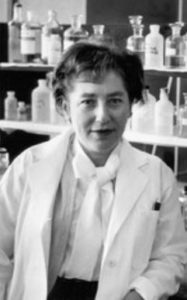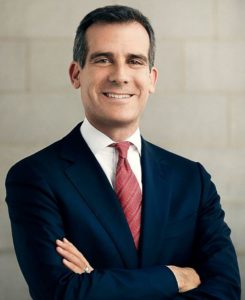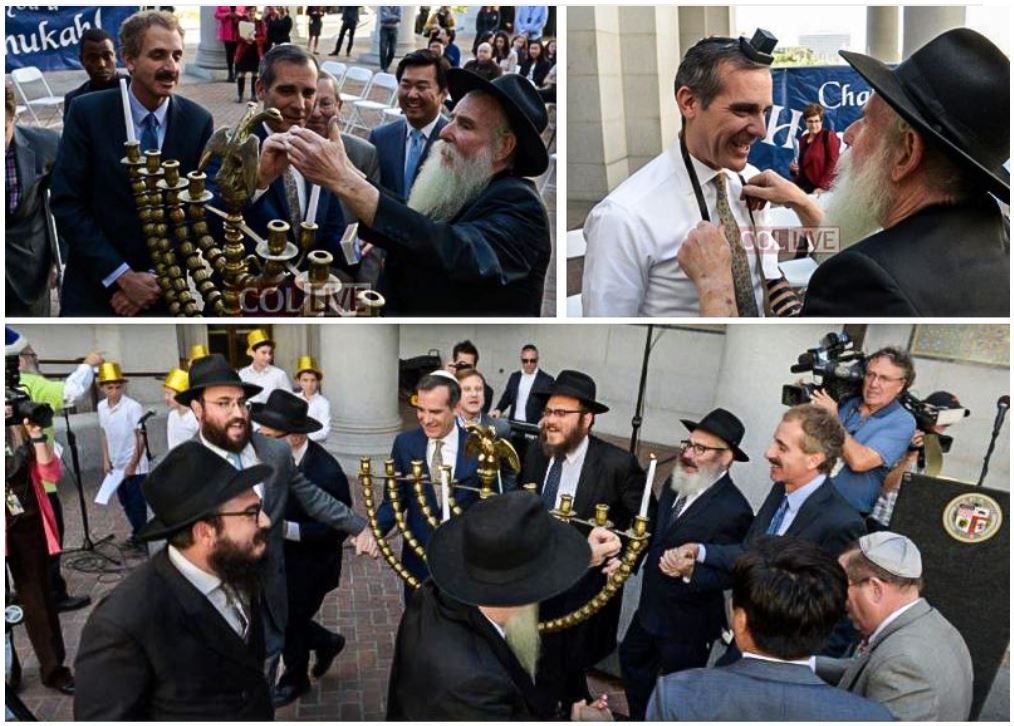Discovering DNA Structure
 Erwin Chargaff (1905-2002) was born in what is now Chernivtsi, Ukraine (then part of the Austo-Hungarian Empire). His family was of the little-known Bukovinian Jewish community that blended elements of Ottoman, Romanian, Austrian, and Ukrainian culture and had a mix of Ashkenazi and Sephardi heritage and practice. During World War I, the family moved to Vienna, where Chargaff went on to study chemistry. In 1925, he took a job as professor of organic chemistry at Yale University. He moved to the University of Berlin in 1930 to head the chemistry lab for the bacteriology and public health department. During this time, he made some important findings about bacterial membranes and lipids. When the Nazis came to power, Chargaff was forced to resign and fled to Paris. After spending a couple of years doing research at the Pasteur Institute, Chargaff returned to the States to become a professor at Columbia University for the next four decades. This is where he did some of his most famous work, including on the mechanism of blood clotting. His main focus, however, was on the chemistry of mysterious DNA. He soon discovered that DNA always contained equal amounts of the nitrogen bases adenine and thymine, and equal amounts of cytosine and guanine, suggesting that the two sets pair up. (This would become known as the first of “Chargaff’s Rules”.) His 1950 paper was instrumental in allowing Watson and Crick to solve the puzzle of DNA structure just a few years later. In fact, it was a conversation that Chargaff had with Watson and Crick in 1952 which led them to deduce DNA’s double-helix structure. Not surprisingly, Chargaff protested when Watson and Crick won a Nobel Prize while he was excluded. Chargaff did win many other prizes, including the Pasteur Medal, the Heineken Prize, and the National Medal of Science. After retiring from Columbia, he continued to do research at the Roosevelt Hospital until the age of 87! Chargaff was highly critical of genetic engineering and biotechnology, saying that it would inevitably be abused and lead to a “molecular Auschwitz”. (Many today would say he was right!) Chargaff is often considered one of the fathers of biochemistry, and “Chargaff’s Rules” are still a fundamental concept taught in biology classes today.
Erwin Chargaff (1905-2002) was born in what is now Chernivtsi, Ukraine (then part of the Austo-Hungarian Empire). His family was of the little-known Bukovinian Jewish community that blended elements of Ottoman, Romanian, Austrian, and Ukrainian culture and had a mix of Ashkenazi and Sephardi heritage and practice. During World War I, the family moved to Vienna, where Chargaff went on to study chemistry. In 1925, he took a job as professor of organic chemistry at Yale University. He moved to the University of Berlin in 1930 to head the chemistry lab for the bacteriology and public health department. During this time, he made some important findings about bacterial membranes and lipids. When the Nazis came to power, Chargaff was forced to resign and fled to Paris. After spending a couple of years doing research at the Pasteur Institute, Chargaff returned to the States to become a professor at Columbia University for the next four decades. This is where he did some of his most famous work, including on the mechanism of blood clotting. His main focus, however, was on the chemistry of mysterious DNA. He soon discovered that DNA always contained equal amounts of the nitrogen bases adenine and thymine, and equal amounts of cytosine and guanine, suggesting that the two sets pair up. (This would become known as the first of “Chargaff’s Rules”.) His 1950 paper was instrumental in allowing Watson and Crick to solve the puzzle of DNA structure just a few years later. In fact, it was a conversation that Chargaff had with Watson and Crick in 1952 which led them to deduce DNA’s double-helix structure. Not surprisingly, Chargaff protested when Watson and Crick won a Nobel Prize while he was excluded. Chargaff did win many other prizes, including the Pasteur Medal, the Heineken Prize, and the National Medal of Science. After retiring from Columbia, he continued to do research at the Roosevelt Hospital until the age of 87! Chargaff was highly critical of genetic engineering and biotechnology, saying that it would inevitably be abused and lead to a “molecular Auschwitz”. (Many today would say he was right!) Chargaff is often considered one of the fathers of biochemistry, and “Chargaff’s Rules” are still a fundamental concept taught in biology classes today.
Lag b’Omer Begins Saturday Night!
The Hidden History of Lag b’Omer
Reincarnation in Judaism (Video)
Words of the Week
There are two nuclei that man should never have touched: the atomic nucleus and the cell nucleus. The technology of genetic engineering poses a greater threat to the world than the advent of nuclear technology.
– Erwin Chargaff

 Mildred Cohn (1913-2009) was born in New York to Jewish-Russian immigrants. Her father was a rabbi and Cohn grew up in a religious, Yiddish-speaking home, though one which also prioritized secular education and the arts. Cohn graduated high school by the age of 14 and got her Bachelor’s degree in biochemistry at 18, followed by her Master’s from Columbia University. Unable to afford any further schooling, Cohn got a job researching for the National Advisory Committee for Aeronautics (NACA), which would later become NASA. She was the only woman among seventy men, and was told she shouldn’t expect any promotions. Two years later, she had enough money to return to school, pursuing her PhD at Columbia under recent Nobel Prize-winner Harold Urey. Cohn focused her work on carbon and oxygen isotopes. From there, she moved on to Washington University to do research on metabolism using sulfur isotopes. Later, she switched to using nuclear magnetic resonance and made a huge breakthrough in 1958 when she was able to visualize ATP, the central energy molecule that powers human cells and essentially all living things. Cohn discovered much of what we know about ATP and how it works. All in all, she wrote 160 scientific papers and won numerous awards, including the National Medal of Science (awarded to her by President Reagan). She was the first female editor of the Journal of Biological Chemistry and the first female president of the American Society for Biochemistry and Molecular Biology. In 2009 she was inducted in the National Women’s Hall of Fame. Cohn was married to renowned Jewish physicist Henry Primakoff. Many of her ATP discoveries came while she was working at the lab of another great Jewish scientist, Gerty Cori.
Mildred Cohn (1913-2009) was born in New York to Jewish-Russian immigrants. Her father was a rabbi and Cohn grew up in a religious, Yiddish-speaking home, though one which also prioritized secular education and the arts. Cohn graduated high school by the age of 14 and got her Bachelor’s degree in biochemistry at 18, followed by her Master’s from Columbia University. Unable to afford any further schooling, Cohn got a job researching for the National Advisory Committee for Aeronautics (NACA), which would later become NASA. She was the only woman among seventy men, and was told she shouldn’t expect any promotions. Two years later, she had enough money to return to school, pursuing her PhD at Columbia under recent Nobel Prize-winner Harold Urey. Cohn focused her work on carbon and oxygen isotopes. From there, she moved on to Washington University to do research on metabolism using sulfur isotopes. Later, she switched to using nuclear magnetic resonance and made a huge breakthrough in 1958 when she was able to visualize ATP, the central energy molecule that powers human cells and essentially all living things. Cohn discovered much of what we know about ATP and how it works. All in all, she wrote 160 scientific papers and won numerous awards, including the National Medal of Science (awarded to her by President Reagan). She was the first female editor of the Journal of Biological Chemistry and the first female president of the American Society for Biochemistry and Molecular Biology. In 2009 she was inducted in the National Women’s Hall of Fame. Cohn was married to renowned Jewish physicist Henry Primakoff. Many of her ATP discoveries came while she was working at the lab of another great Jewish scientist, Gerty Cori. Gerty Theresa Radnitz Cori (1896-1957) was born in Prague. Her father was a chemist who had invented a new way of refining sugar. At 16, Cori decided to become a doctor, but found that she was missing nearly all the prerequisites. So, in one year she took eighteen years-worth of courses in Latin, science, and math. Cori passed her entrance exam and was among the first women ever to be admitted to Prague’s medical school. After graduating, she worked at a children’s hospital and also did research on blood disorders, the thyroid gland, and the body’s ability to regular temperature. Due to persistent food shortages and rising anti-Semitism after World War I, Cori and her husband (also a doctor and scientist) left Prague and moved to New York. The couple did research together at what is now the Roswell Park Cancer Institute in Buffalo, focusing on glucose metabolism. Cori published 11 papers of her own, and another 50 together with her husband. By 1929, the Coris had figured out how the body metabolized glucose in the absence of oxygen, a process now known as the Cori Cycle. For this, they won a Nobel Prize in 1947. This made Cori the first American woman to win a Nobel Prize (and only the third woman overall), as well as the first woman ever to win a Nobel Prize in Medicine. In 1931, the couple took over a lab at Washington University (with Cori being paid one-tenth her husband’s salary). Here they made many more vital scientific discoveries, and mentored a new generation of scientists—six of which went on to win Nobel Prizes of their own. For this reason, their lab was deemed a National Historic Landmark in 2004. Like Mildred Cohn, Gerty Cori won countless awards and was inducted into the National Women’s Hall of Fame. There are craters on the Moon and on Venus named after her, as well as a commemorative US stamp. After battling the disease for a decade, Cori succumbed to bone cancer, likely caused by her extensive work with X-rays.
Gerty Theresa Radnitz Cori (1896-1957) was born in Prague. Her father was a chemist who had invented a new way of refining sugar. At 16, Cori decided to become a doctor, but found that she was missing nearly all the prerequisites. So, in one year she took eighteen years-worth of courses in Latin, science, and math. Cori passed her entrance exam and was among the first women ever to be admitted to Prague’s medical school. After graduating, she worked at a children’s hospital and also did research on blood disorders, the thyroid gland, and the body’s ability to regular temperature. Due to persistent food shortages and rising anti-Semitism after World War I, Cori and her husband (also a doctor and scientist) left Prague and moved to New York. The couple did research together at what is now the Roswell Park Cancer Institute in Buffalo, focusing on glucose metabolism. Cori published 11 papers of her own, and another 50 together with her husband. By 1929, the Coris had figured out how the body metabolized glucose in the absence of oxygen, a process now known as the Cori Cycle. For this, they won a Nobel Prize in 1947. This made Cori the first American woman to win a Nobel Prize (and only the third woman overall), as well as the first woman ever to win a Nobel Prize in Medicine. In 1931, the couple took over a lab at Washington University (with Cori being paid one-tenth her husband’s salary). Here they made many more vital scientific discoveries, and mentored a new generation of scientists—six of which went on to win Nobel Prizes of their own. For this reason, their lab was deemed a National Historic Landmark in 2004. Like Mildred Cohn, Gerty Cori won countless awards and was inducted into the National Women’s Hall of Fame. There are craters on the Moon and on Venus named after her, as well as a commemorative US stamp. After battling the disease for a decade, Cori succumbed to bone cancer, likely caused by her extensive work with X-rays.
